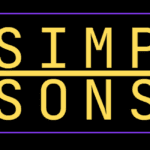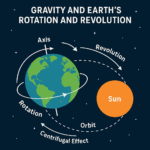
The Google Graveyard: A Chronicle of Fallen Products

Google, the tech giant synonymous with innovation, has also seen its fair share of product failures. From ambitious ideas to social media misfires, here’s a glimpse into some notable products that didn’t quite make the cut:
| Year Introduced | Product Name | Description | Reason for Failure |
|---|---|---|---|
| 2002 | Knol | A collaborative knowledge base where users could create and edit articles | Complex interface, difficulty attracting contributors, overshadowed by Wikipedia |
| 2004 | Google Catalog Search | Price comparison tool for online shopping | Lack of adoption by major retailers, difficulty competing with established search engines for product information |
| 2006 | Google Ride Finder (later renamed Google Transit) | Public transportation trip planning service | Limited availability (US only initially), reliance on user-generated data, integration into Google Maps |
| 2006 | Google Pack | Delivery service for physical products searched for online | Lack of scalability, logistical challenges, competition from established retailers |
| 2006 | Google Video | Video search engine and hosting platform | Rise of YouTube, difficulty competing with user-generated content platforms |
| 2008 | Google Health | Platform for storing and managing personal health information | Privacy concerns, limited adoption by healthcare providers, technical complexity |
| 2011 | Google Instant Search | Displayed search results as you typed | User annoyance, cluttered interface, limited value proposition |
| 2011 | Google Offers (later renamed Google Shopping Express) | Same-day delivery service for online shopping | Limited availability, high costs, competition from established delivery services |
| 2011 | Google Chrome to Phone | Mobile extension to send webpages and links from Chrome browser to phone | Limited functionality, rise of mobile web browsing, integration into Chrome mobile app |
| 2012 | Google Hot Pot | Social news aggregator | Lack of differentiation from existing platforms, limited user adoption |
| 2013 | Google Social Search | Integrated social media results into search queries | Privacy concerns, limited value proposition, user preference for traditional search results |
| 2014 | Google Explorer Launcher | Alternative Android launcher with a focus on personalization | Limited adoption, customization options already available in Android, competition from third-party launchers |
| 2015 | Google Apps Script | Scripting platform for extending functionality of Google Apps | Limited developer adoption, niche audience, complexity for casual users |
| 2015 | Google Contributor | App that rewarded users for sharing data about their phone usage | Privacy concerns, ethical considerations, limited user participation |
| 2015 | Google Nexus Q | Streaming device for connecting phones and tablets to TVs | Limited functionality, overshadowed by Chromecast, discontinuation of Nexus line |
| 2016 | Google WiFi Router | Mesh Wi-Fi router system | Limited market share, competition from established networking companies, discontinuation due to focus on Google Nest products |
| 2018 | Google Trips | Travel planning and recommendation app | Integration of features into Google Search and Google Maps, limited user adoption |
| 2019 | Pixel Slate | Chrome OS tablet computer | Limited market for Chrome OS tablets, competition from Apple iPad and Microsoft Surface, discontinuation of Pixelbook line |
| 2021 | Android Auto | In-car infotainment platform with limited phone integration | Competition from Apple CarPlay, user preference for using phone apps directly, discontinuation in favor of Android Automotive OS integration within car systems |
Analysis of Failed Google Products
- Reasons for Failure:
- Low Adoption: Many products failed due to low user engagement and adoption, such as Google Wave and Google Health.
- Market Competition: Strong competition from existing platforms often overshadowed Google’s offerings, as seen with Google Buzz and Google Lively.
- Technological Challenges: Projects like Project Ara faced technical hurdles that hindered their successful launch.
- Strategic Shifts: Google often discontinued products to focus on core services or integrate features into existing successful platforms, such as merging Google Play Music into YouTube Music.
- Lessons Learned:
- User-Centric Approach: Products that failed often lacked clear user benefits or had complex interfaces.
- Adaptability: The tech industry’s rapid changes require constant adaptation and innovation, which some products couldn’t sustain.
- Market Research: Understanding user needs and preferences is crucial for product success, as highlighted by the failure of Google Buzz and Google Wave.
- Impact on Innovation:
- Despite these failures, Google’s willingness to experiment has led to successful products like Google Search, Android OS, and Google Maps, which have revolutionized their respective markets.
Conclusion
Google’s journey is marked by both triumphs and failures in its quest for innovation. The failures listed above illustrate the challenges of introducing new products in a competitive and rapidly evolving tech landscape. Each failure provides valuable lessons that contribute to Google’s ongoing efforts to develop and refine products that meet user needs and expectations.
As Google continues to innovate, these experiences will continue to shape its approach to product development and strategic decision-making in the future.
Hello, I am Aman (: Full Time Traveler :) At the age of 41, in April 2023, fueled by my love for travel and the determination not to remain fixed like a tree, I embarked on a bold journey. Having dedicated 17 years to a corporate job, I chose to transition from a full-time employee to a full-time traveler, driven by the desire to break free from the routine and constraints of a conventional life. Along the way, I not only explored the wonders of travel but also uncovered the transformative power of financial freedom. I realized how it could liberate me to lead a life teeming with adventure, purpose, and fulfillment. Through my blogs, I am passionately sharing my story, aiming to inspire and provide valuable guidance to those, like me, who aspire to weave travel into a life overflowing with limitless possibilities.






















Post Comment
You must be logged in to post a comment.